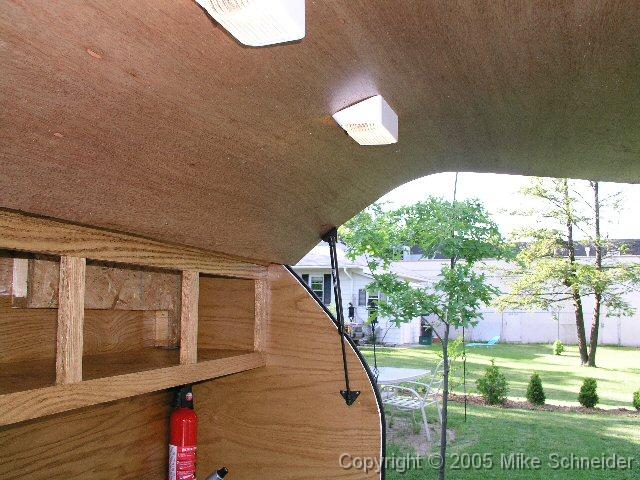Betsey wrote:Hi Heikki,
This is Craig, I’m hijacking Betsey’s account again.
Hopefully this will make sense.
There are two ways to mount gas springs. Here is a picture showing the two ways.

The picture shows the hatch in the open position with the gas spring extended and it shows the hatch in the closed position with the gas spring collapsed.
Style 1 is, in my opinion, a less desirable configuration.
Since the gas spring mounts closer to the hinge, it must be stronger to hold the hatch open and therefore, it puts more stress on the hatch and the hinge. Style 2 puts the force farther away from the hinge and therefore requires a lighter spring. Since the spring is lighter, it puts lower stresses on the frame and hinge.
Here are a couple pointers to keep in mind:
1. The further you mount the spring from the hinge, the less stress the spring puts on the hatch and hinge.
2. The further you mount the spring from the hinge, the lighter the spring needed to hold the hatch open.
3. The spring should be mounted with the plunger down, when the hatch is closed. This will allow the lubricant in the gas spring to help keep the seal from drying out. If the seal dries out, the compressed gas leaks out and the spring loses some of it’s force.
4. When figuring out the closed length of the gas spring, add a little bit to the length. This will prevent the gas spring from bottoming out and binding.
For more info and pointers go to:
http://www.mcmaster.com/In the search on the left, type in “about gas springs”
You will see a page from their catalog that shows a lot of info about selecting and mounting gas springs.
Hope this helps,
Craig



 :x I know those gas springs are putting a lot of force on the hinge, but wow it's a lot! What do I do to keep the hinge in place?
:x I know those gas springs are putting a lot of force on the hinge, but wow it's a lot! What do I do to keep the hinge in place?







 Mark (& Cindi)
Mark (& Cindi) 



 when i put the gas strut to it i had the same thinh happen also i had too stronge of a strut that was pushing up with to much force I got new struts 50 lb all is good now
when i put the gas strut to it i had the same thinh happen also i had too stronge of a strut that was pushing up with to much force I got new struts 50 lb all is good now
